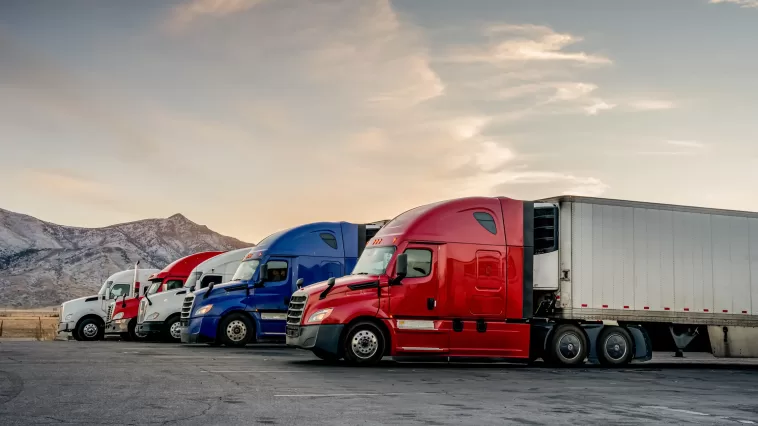The pulse of the trucking industry can often be measured by the ebb and flow of spot rates. Like a freighter navigating swelling seas, these rates are a rough barometer of the tides in the logistics ocean. For those perched at the helm in the logistics sector, understanding spot rates isn’t merely about predicting and adapting to changes—it’s about staying afloat in the choppy waters of an industry rife with intricacies and unpredictabilities. But what are these spot rates, and why does the recent settling trend bear close scrutiny?
Spot rates are essentially the current price at which a particular cargo shipment can be transported on any given day, and they are subject to rapid changes based on supply and demand. Much like a well-applied bedliner for trucks protects the vehicle’s bed from the scratches and dings of its cargo, a robust understanding of spot rate trends shields logistics participants from potential financial wear and tear.
Understanding Spot Rates: The Nuts and Bolts of Trucking’s Economic Backbone
Laymen might confuse spot rates with the price tag on a shelf. However, in logistics, these figures are far from stationary. Instead, ‘spot rates’ refer to the immediate cost of shipping freight from one point to another without the necessity of a long-term contract. They play a crucial role in the wheelings and dealings of the industry, especially where fluctuating demand meets the supply of a truck’s limited capacity.
Why are spot rates critical? Since instantaneous shifts influence them in the market, spot rates can also significantly affect long-term contract rates. A bumpy ride in spot rate economics can lead a fleet from feast to famine and back again.

The Dance of Supply and Demand: Spot Rates in Flux
Regarding the intricate ballet of spot rates, supply, and demand are the lead dancers. A sudden surge in demand without the corresponding influx of capacity leads to spot rates that shoot skyward like a rocket on the Fourth of July. Conversely, an oversupply of trucking capacity can send those rates crashing back to earth in a lamentable syncopation.
Fuel prices play a supporting role in this dance. The relationship is complex and multi-faceted, directly affecting operating costs and, subsequently, the pricing strategies carriers employ. Picture, if you will, a complicated tango between fuel costs and freight rates that can leave even the most experienced logistics professional somewhat breathless.
The Seasonal Symphony: Spot Rates Keep Time with the Year
Much like the changing of the leaves, spot rates also adhere to the call of the seasons. There’s a predictable cadence to their movement, with spikes in demand—and thus, rates—during the holidays, especially the ramp-up to Christmas when the freight world becomes Santa’s logistical nightmare brought to life.
Economic Highways and Byways: Trends in the Macro Cosmos
Economic factors form the highway system that spot rates navigate. As GDP grows, so does the need for freight movement, and spot rates quicken their pace accordingly. Similarly, economic downturns can lead to a parched freight landscape dotted with decreased demand and, consequently, lower spot rates.
The Recent Settling Trend: Like Watching the Tide Go Out
Akin to stepping onto a ship’s deck only to find the waves have gradually subsided, the recent settling trend in spot rates symbolizes a moment of equilibrium. After years of volatility, the sector seems to be taking a collective deep breath, suggesting a relatively steady footing—at least for now.
What’s causing this steadying effect? Industry experts point to several contributing factors, including the gradual maturation of the electronic logging device (ELD) mandate, which has, among other things, helped to iron out capacity kinks. Additionally, the pandemic’s various impacts seem to be smoothing out, at least for now, as businesses and customers find a semblance of stability in a post-COVID world.
Impact on the Freight Industry: Riding the Current
The recent settling trend can feel like a double-edged sword for logistics managers, trucking companies, and other industry professionals. On one hand, the relative predictability enables firmer financial planning and more consistent budgeting. On the other hand, it strips away opportunities associated with the spikes that allow for higher profit margins.
This shift has created a “new normal” of sorts—one where adaptability becomes the watchword. Companies must adjust their strategies to align with this more balanced approach, perhaps leaning more on long-term contracts and innovative tech solutions to eke out margins in the currently stable market.
In this sea of change, the most successful logistics professionals will be those who can steer their endeavors with resilience and agility. It’s a time for intelligent, strategic thinking—employing analytics, leveraging partnerships, and ensuring operational efficiency to keep the ship’s course.
Some have taken this period as an opportunity to reevaluate their supply chain, introduce new cost-cutting measures, or invest in driver retention programs—actions that not only smooth out the current environment but also fortify for the uncertain future.
Case Studies and Examples: Toolbox Tales from the Tarmac
Real-world scenarios paint a vivid picture of how companies navigate the settling trend. From switching up the types of freight brokerage to focusing on building stronger relationships with clients, each case study is a lesson in adaptability.
Take, for instance, the company that shifted gears toward more reliable, less volatile business streams by emphasizing contract freight. This strategic redirection provided a more safeguarded revenue base and cultivated trust and loyalty with clients—an invaluable asset in any market.
Similarly, a trucking business investing heavily in technology was better equipped to handle fluctuations. From route optimization to predictive maintenance, the digital toolkit provided the edge needed to thrive in the new climate.



